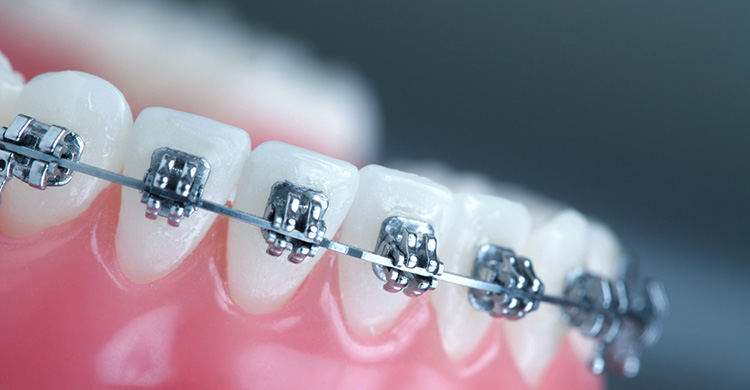Orthodontic treatment is a common dental procedure aimed at correcting misaligned teeth and jaws. While many people associate orthodontics primarily with braces and aligners, tooth extractions can also play a crucial role in achieving optimal results. This article will explore which teeth are typically extracted during orthodontic treatment, the reasons for these extractions, and the implications for patients.
What Is Orthodontic Treatment?
Orthodontics focuses on diagnosing, preventing, and treating dental and facial irregularities. The primary goal is to create a healthy bite and improve the overall appearance of the smile. In some cases, orthodontists may recommend extracting teeth to facilitate proper alignment. This decision is based on a thorough examination of the patient’s dental structure, including X-rays and clinical assessments.
Tooth extractions are not always necessary, but they can be beneficial in specific situations. Understanding when and why teeth need to be extracted can help patients make informed decisions about their orthodontic treatment.
Reasons for Tooth Extractions in Orthodontics
Severe Crowding
One of the most common reasons for tooth extractions in orthodontics is severe crowding. When there is not enough space in the mouth for all teeth to align properly, extracting one or more teeth can create the necessary space. This helps prevent overlapping teeth and allows for better alignment.
Protruding Teeth
Protruding front teeth can lead to aesthetic concerns and functional issues. In cases where the front teeth are excessively forward, extractions may be necessary to create space for them to move back into a more desirable position.
Bite Correction
Tooth extractions can also be essential for correcting bite issues such as overbites or underbites. By removing specific teeth, orthodontists can improve the overall bite relationship between the upper and lower jaws, leading to better function and comfort.
see also: Which Type of Scaler Is Useful When Removing Orthodontic Cement
Impacted Teeth
Impacted teeth are those that do not fully erupt into the mouth due to lack of space or improper positioning. Wisdom teeth, in particular, are often impacted and may need to be extracted before or during orthodontic treatment to prevent complications.
Dental Health Issues
In some cases, teeth that are severely decayed or damaged may need to be extracted before starting orthodontic treatment.
Removing unhealthy teeth helps ensure that the remaining teeth have a sound foundation for movement.
Facilitate Orthodontic Movement
Extractions can sometimes reduce overall treatment time by allowing adjacent teeth to move more freely into their new positions. This can lead to quicker results compared to trying to align all teeth without creating additional space.
Specific Teeth Commonly Extracted
First Premolars
First premolars are among the most commonly extracted teeth in orthodontic treatment. These teeth are located behind the canine teeth and play a crucial role in chewing food. However, when crowding is present or when correcting protruding front teeth, extracting first premolars can create significant space for proper alignment.
Second Premolars
In some cases, second premolars may also be extracted, particularly if they contribute to crowding or if there is a need for additional space during treatment. The decision to remove second premolars usually depends on individual circumstances and treatment goals.
Canines
Although less common than premolar extractions, canines may be removed in specific situations where they are impacted or if their position significantly affects the bite or alignment of other teeth.
Wisdom Teeth
Wisdom teeth are often extracted as part of orthodontic treatment due to their tendency to become impacted or cause crowding as they attempt to emerge in late adolescence or early adulthood. Removing wisdom teeth helps prevent complications during orthodontic treatment.
Decayed Teeth
Any tooth that is severely decayed or compromised may need extraction before starting orthodontic treatment. This ensures that all remaining teeth are healthy enough to support effective movement during treatment.
The Extraction Process
The process of tooth extraction typically involves several steps:
Consultation and Examination: The orthodontist will conduct a thorough examination of your dental health, including X-rays, to determine if extractions are necessary.
Treatment Plan: If extractions are recommended, the orthodontist will develop a personalized treatment plan outlining which teeth will be removed and how this will impact your overall orthodontic goals.
Extraction Procedure: The actual extraction is usually performed by an oral surgeon or general dentist under local anesthesia or sedation, depending on the complexity of the case.
Post-Extraction Care: After extraction, patients receive instructions on how to care for the extraction site to promote healing and minimize discomfort.
Aftercare Following Extractions
Proper aftercare is essential after tooth extractions:
Follow Instructions: Patients should follow all post-operative care instructions provided by their dentist or oral surgeon.
Manage Pain: Over-the-counter pain medications can help manage discomfort after extraction.
Avoid Certain Foods: It’s advisable to avoid hard or crunchy foods that could irritate the extraction site.
Maintain Oral Hygiene: Keeping up with oral hygiene is crucial; however, patients should avoid brushing directly over the extraction site until it has healed sufficiently.
Conclusion
Tooth extractions can be an essential part of orthodontic treatment for many patients. Understanding which teeth may need to be removed—such as first premolars, second premolars, canines, wisdom teeth, and severely decayed teeth—can help patients prepare for their journey toward a healthier smile.
While not every patient will require extractions, those who do often benefit from improved alignment, better bite function, and enhanced aesthetics once their treatment is complete. It is crucial for patients to work closely with their orthodontist throughout this process to ensure that all decisions regarding extractions align with their long-term dental health goals.

